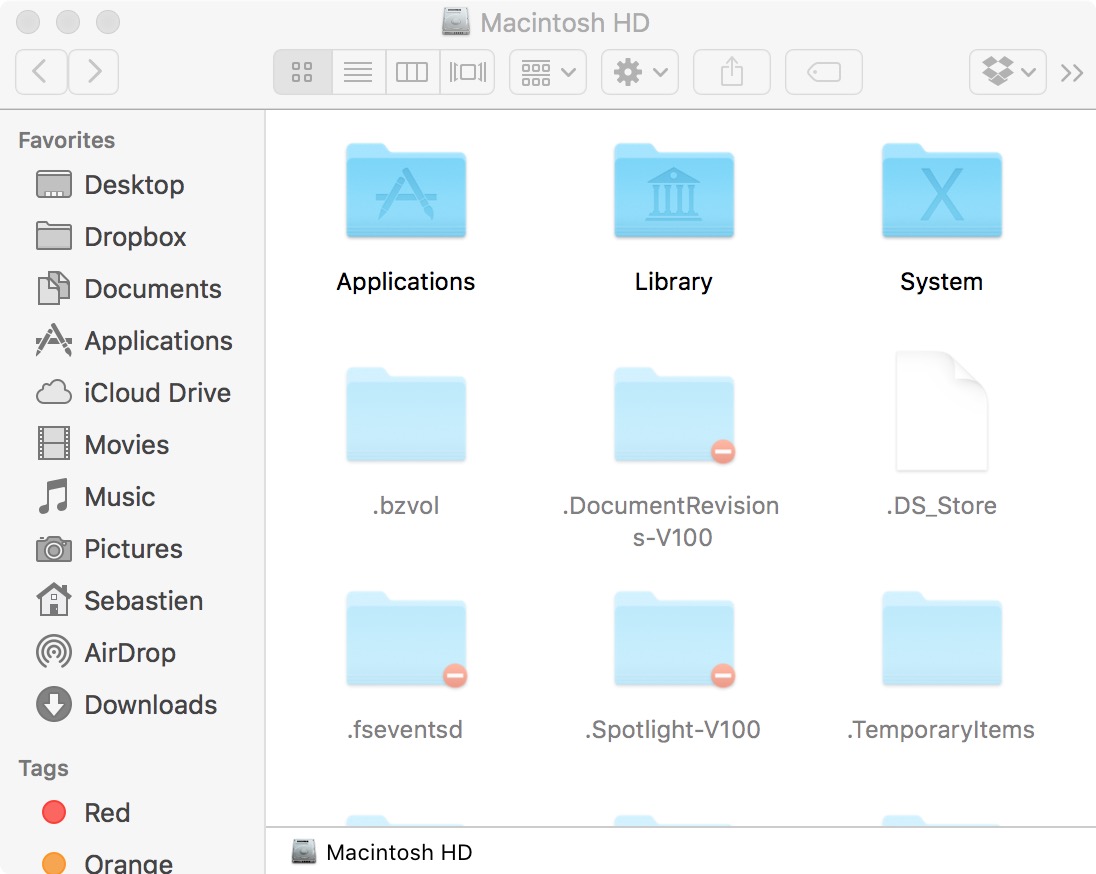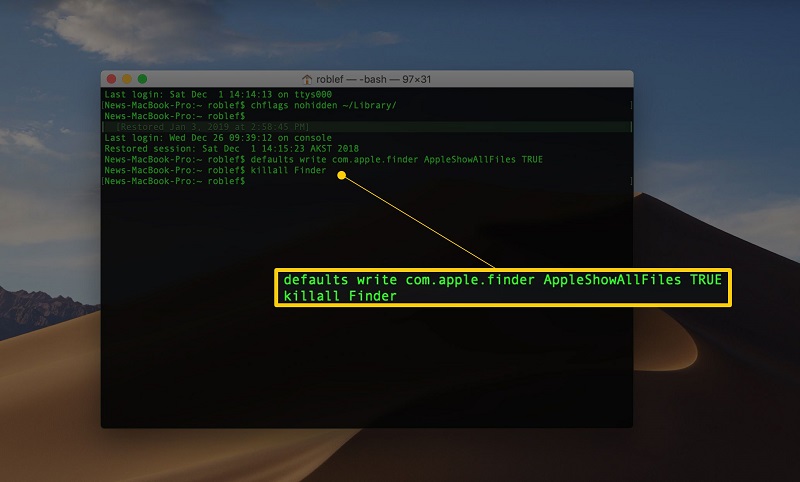
- #Mac terminal show hidden files ls how to#
- #Mac terminal show hidden files ls code#
- #Mac terminal show hidden files ls mac#
#Mac terminal show hidden files ls mac#
Terminal allows you to manually input commands directly into your Mac’s OS, changing the way your Mac functions. You can also use the Terminal app to show the hidden files on your Mac. to show hidden Mac files on your desktop. You can also click your desktop and press Command + Shift +. To hide the files again, press Command + Shift +. This will show hidden files in the folder. Navigate to the folder where you want to find hidden files.
#Mac terminal show hidden files ls how to#
Here’s how to do it:Ĭlick the Finder icon in your dock to open Finder.

Using Finder is the simplest way to find hidden files on your Mac. If you’re ready to take a peek behind the scenes of your computer, here are a few ways to show those hidden Mac files. But you shouldn’t modify your hidden Mac files unless you know what you’re doing, because deleting the wrong files might negatively affect the performance of your device or weaken its security. You can reveal hidden files on macOS via the ~/Library folder. Hidden Mac files include system files, configuration files, and cache files, and make up other storage and system data on your Mac’s hard drive. To obscure something from view on your Mac, follow these steps:ĭrag the files you want to hide into the Terminal window.120137977613 Logo Ameba Icon Security Icon Security White Icon Privacy Icon Performance Icon Privacy Icon Security Icon Performance Icons/45/01 Security/Other-Threats Icons / 32 / Bloatware removal Icons / 32 / Registry Cleaner Icons / 32 / CleanUp Icons / Feature / 32 / Mac Icons / 32 / Browser cleanup Icons/32/01 Security/Malware Icons/32/01 Security/Viruses Icons/32/01 Security/Other-Threats Icons/32/01 Security/phishing Icons/32/01 Security/Scams Icons/32/01 Security/hacking Icons/32/01 Security/Security-tips Icons/32/01 Privacy/Privacy-tips Icons/32/01 Performance/Software Icons/32/01 Privacy/Identity-Protection Icons/32/01 Privacy/Digital-life Icons/32/01 Performance/Performance-tips Icons/32/01 Security/Passwords Icons/32/01 Security/Ransomware Icons/32/01 Security/Business Icons/32/02 Privacy/Browser Icons/32/02 Privacy/IP adress Icons/32/02 Privacy/VPN Icons/32/02 Privacy/Proxy Icons/32/02 Privacy/Streaming Icons/32/03 Performance/Celaning Icons/32/03 Performance/Drivers Icons/32/03 Performance/Gaming Icons/32/03 Performance/Hardware Icons/32/03 Performance/Speed Icons / 32 / Bloatware removal Icons / 32 / Registry Cleaner Win Icons / 32 / CleanUp Icons / Feature / 32 / Mac Icons / 32 / Browser cleanup Icons/60/02 Privacy/02_Privacy Icons/60/01 Security/01_Security Icons/60/03 Performance/03_Performance Icons/45/01 Security/phishing Icons/45/01 Security/Scams Icons/45/01 Security/hacking Icons/45/01 Security/Security-tips Icons/45/01 Privacy/Privacy-tips Icons/45/01 Performance/Software Icons/45/01 Privacy/Identity-Protection Icons/45/01 Privacy/Digital-life Icons/45/01 Performance/Performance-tips Icons/80/01 Security/phishing Icons/80/01 Security/Scams Icons/80/01 Security/hacking Icons/80/01 Security/Security-tips Icons/80/01 Privacy/Privacy-tips Icons/80/01 Performance/Software Icons/80/01 Privacy/Identity-Protection Icons/80/01 Privacy/Digital-life Icons/80/01 Performance/Performance-tips Icons/80/01 Security/IoT Icons/80/01 Security/Malware Icons/80/01 Security/Passwords Icons/80/01 Security/Ransomware Icons/80/01 Security/Viruses Icons/80/01 Security/Other-Threats Icons/80/03 Security/Business Icons/80/02 Privacy/Browser Icons/80/02 Privacy/IP adress Icons/80/02 Privacy/VPN Icons/80/02 Privacy/Proxy Icons/80/02 Privacy/Streaming Icons/80/03 Performance/Celaning Icons/80/03 Performance/Drivers Icons/80/03 Performance/Gaming Icons/80/03 Performance/Hardware Icons/80/03 Performance/Speed Icons/80/03 Performance/03_Performance Icons/80/02 Privacy/02_Privacy #You can also use Terminal to hide your specific files from prying eyes.
#Mac terminal show hidden files ls code#
#Type Below code For Hide and press “Enter.”

When you're done, tuck away the files again by following these steps: #Once you run the script, the hidden files should show up in Finder.

#Type below code and press “Enter” again. Alternatively, you can find it by clicking on Go in the menu bar, selecting “Applications,” scrolling down to “Utilities,” expanding the folder, and clicking on “Terminal.” #Open Terminal by typing “Terminal” in Mac's search bar.


 0 kommentar(er)
0 kommentar(er)
